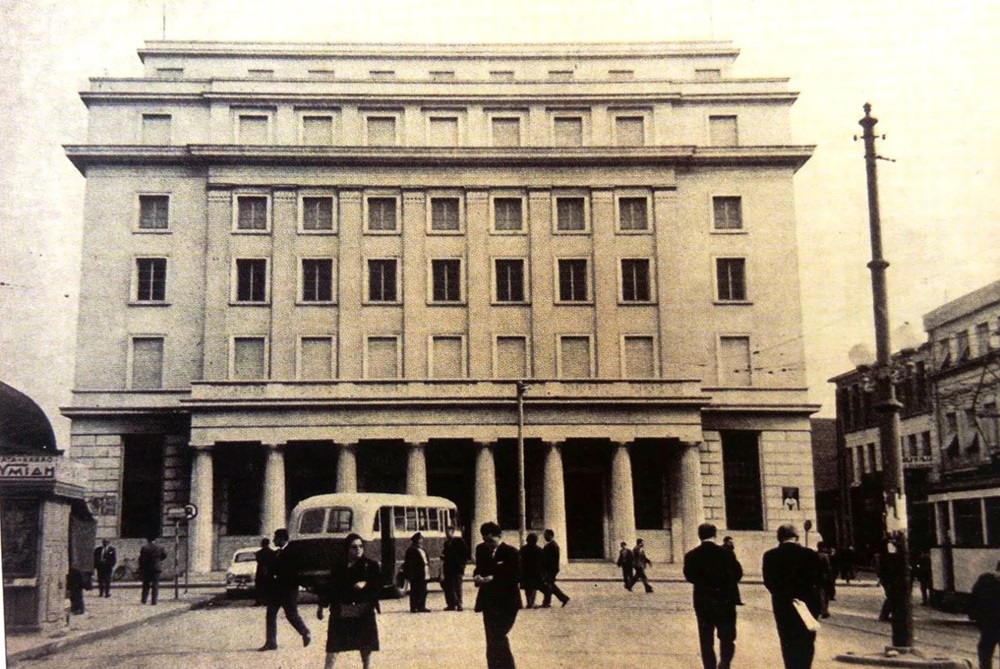
The interconnection of Athens with the port of Piraeus was the necessary condition for Athens to play its role as the capital of Greece.
Already from antiquity, Piraeus Street had assumed this key role, maintaining throughout history a central position in the life of Athens. It was always a “lively” street with a lot of traffic, following of course the periods of prosperity and decline of Athens.
After the liberation of Athens from the Ottoman rule, the image of Piraeus Street was that of a rough road connecting the port of Piraeus with Ermou Street. Crossing it, one could see deserted, marshy areas, fields, vineyards and olive groves. However, this picture would change with the declaration of Athens as the capital of the country.
Pireos Street was the first road that was decided during the reign of Otto to be opened and paved. The completion of the 8 km long paved road in 1836 facilitated not only the transport of goods to Athens but also the reconstruction of the city itself. Now, the transport of building materials for public and private buildings was much easier and faster. Horses and camels, carts and carriages were used for transportation.
The opening of the road gradually brought the rebuilding of mansions on its outskirts, while from the middle of the 19th century the road was opened for its industrialization with potteries, lime kilns and tanneries being built along its length.
However, it was obvious from quite early on that Pireos Street was not sufficient to cover the communication needs of the capital with the port. Thus, after some unsuccessful proposals, in 1867 the English businessman Eduardo Pickering undertook the construction of a railway that would connect Piraeus with Thiseion.
On 27 February 1869, the first voyage took place in a festive atmosphere, with Queen Olga, Prime Minister Zaimis, ministers, military officers, diplomats and other dignitaries as passengers on the first voyage. The steam-powered locomotive with the 6 wagons it carried covered the 8 kilometres of the route in just sixteen minutes.
The construction of the railway was greeted with great enthusiasm as it marked the progress and upgrading of Athens into a modern city. However, there was no shortage of complaints: “Yesterday was the inauguration of the railway…. As of today it has begun its regular journeys, but the prices of the seats are exorbitant. The first seat was offered at one drachma, the second at 75 cents, the third at 45. The distance is very short, and the prices of the seats ought to be similar, besides the seats are all bare, including that of the first class, which is uncommon and inappropriate.”.
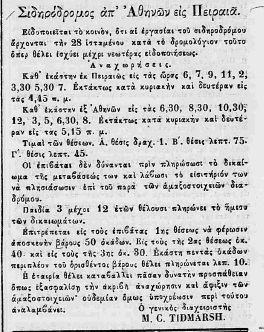
Among the other infrastructure projects that continued to be built to improve the railway, the replacement of steam with electricity in 1898-1900 stands out. By now the “Electric Railway” had been created.
In 1880 the “Public Limited Company of the Athens to Piraeus Railway” was founded and took over the operation of the railway. Among the other projects carried out by the Company in its first years of operation were the construction of new wagons, landscaping works in Neo Faliro, which was becoming a holiday destination, and the construction of new stations such as THISEION and PIREAUS.
The Piraeus station was built very close to the harbour quay. The building had rectangular openings, Corinthian columns, Byzantine-type tiles and a cornice on the roof. Its appearance was reminiscent of many of the villas built in the 19th century in Faliro.
However, the station gave way to the ISAP Hall, which was built in approximately the same location during the interwar period. The magnificent current image of PIRAEUS station is due to the architect Ioannis Mich. Akselos and his brother, civil engineer Miltiadis Mich. Akselos, who undertook its construction in the two years between 1928 and 1929. It follows the European standards of the time, and is a miniature of the Milan railway station. The station was a magnificent structure dominated by an eclectic architectural style and dominated by a large glass dome.
The station immediately became a reference point for Piraeus. Many professionals rushed to rent offices within the station’s building.
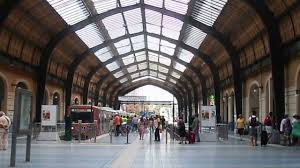
In front of the station, the Louis Square was created. The visitor rightly feels that the place has been a reference point throughout time. The name of the square has its own interesting history. Before the 1930s, this particular square was called Louis Square, and on 22 June 1937 it was renamed 4th of August Square (with the rise of Ioannis Metaxas to power). Then, on 17 February 1945, the square was renamed Franklin Roosevelt Square in honour of the American Allies.
The last stop in this unusual name change comes for the square on 24 January 1994. This is the date, according to the records of the Piraeus City Council (63/94), when it was agreed to “rename the Square of Louis (Roosevelt) in front of the Electric Station to Odessa Square, on the occasion of the anniversary of 25 March 1994 and the presence of the delegation of the city of Odessa, twinned with our Municipality, during the celebration“.
The station square has always been, and remains, one of the busiest and most crowded places in the city. Passengers disembarking from the train to head to the port, passengers of the ferries arriving in Piraeus to move to Athens, workers, tourists and passers-by give the square the energy that is unique. For many years the square was the starting point of the city buses and the taxi station. It is precisely this mobility that has made Louis Square an attraction for vendors and small shopkeepers since its creation. Shops selling all kinds of products opened up the surrounding streets, giving the area the commercial character it has maintained for decades.
And there could not have been a more suitable location for the construction of the Piraeus Chamber of Commerce and Industry. The building has been a landmark of the city of Piraeus since the early years of its construction, 1949-1953, designed by the architects Kyprianos Biris, Michael Kanakis and Dimitrios Tripodakis. The actions for the construction of a large building capable of meeting the needs of the Chamber began in the inter-war period when the Presidents Georgios Strigos and Panagiotis Kantzias systematically purchased adjacent plots of land. In the post-war years, despite the difficult circumstances, the necessary amount was raised from the contribution of the merchants of the city. The foundation stone was laid in 1950 and the official opening took place in 1957.
From the building of the Chamber of Commerce starts Navarino Street, the most commercial street of the city since the 19th century, forming the backbone of the historical centre of the city, with shops, crafts, banks and restaurants.
At the intersection with Kapodistriou Street, for more than a century the hotel “Sparta” has been standing. The two-storey neoclassical building had housed the French Embassy in the 1850s-1890s and then the Admiralty of the Hellenic Navy until 1910. Since then it has been operating as a hotel, taking its name from the first owner’s home town. Many hotels were located in the busy area and even in the Rigas Feraios Square, better known as Carriage Square, so named precisely because that is where the carriages gathered.

The Navarinou Street led to the emblematic indoor market of the Municipal Market of Piraeus, which dominated the area from 1860 to 1968. The creation of the Market was a necessity for the growing city of Piraeus in the mid-19th century. It included small shops, (bakeries, fruit and vegetable shops, butchers, fishmongers and cabbage shops, divided into four respective sectors). Together with the adjacent church of Agia Triada, it was the centre of the historical, homonymous district of Piraeus. In the area of the Agora, there were also cafes, taverns for the service of customers and merchants and a meeting place for the famous rebetes of the time. The Municipal Market was demolished in 1969 to give its place to the Commercial Tower of Piraeus.


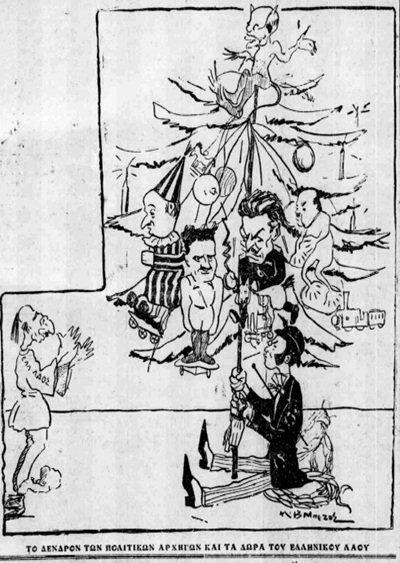
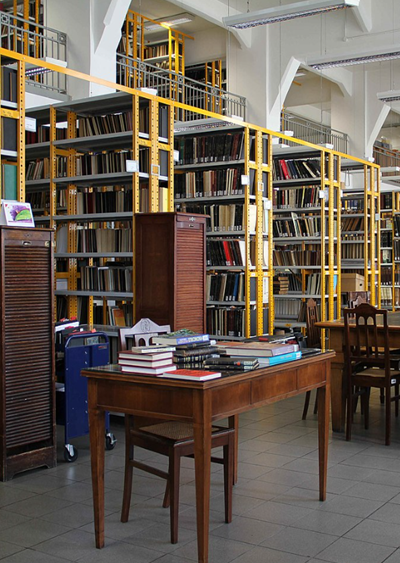



Leave A Comment